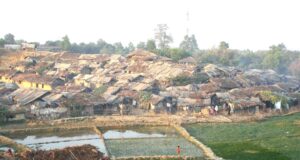I was to interview three individuals (names have been changed for this article) – Nicole, the NGO’s director, James and Jamal (both support staff of TRIPOD) – the last of whom was to take the spotlight of the interview. It was not unexpected that he would be at the centre of the interview. He was the oldest of the three. Dark-skinned with creases along his forehead, a squared jaw and signs of facial wrinkles, Jamal gave the impression that he had been through much of Mindanao’s conflict-ridden history. However it was beyond my guess that this thin man dressed in a simple grey polo shirt was to effect a change in my opinion and perception of child soldiers.
Seated around an oval table draped in a blue tablecloth, Jamal introduced himself as a “peace builder” with the group, assisting in talks between the Dulangan Manobo and Maguindanaon people over a land conflict. With a deep yet soft-spoken voice, he explained that he wanted to extend his experience as a peace builder to help such communities locked in conflict.
But what made him a peace builder in the first place? That was something that interested me. Peace builders are often themselves victims of war. I was keen to hear if he had also been a victim of the long-standing Mindanao conflict.
“I first fought against the military for eight months. I had no choice,” Jamal revealed in response to my aforementioned curiosity.
“Why did you have no choice? Why didn’t you choose to run away?” was my immediate reaction.
Jamal looked at me in the eye, with one arm on the table and the other gesturing, “my relatives were killed. 200 of my relatives [were] dead. 200 victims of martial law.” The emphasis on the number and identity of the dead could not be any clearer. Yet, contrary to what I had expected – a possible start of a run of emotions – Jamal was calm and composed. There was seemingly no anger or sadness. He did not fit the bill that modern media such as Hollywood had painted that any man who had lost that number of relatives at such a young age would be – emotionally depressed and psychologically traumatised. Jamal’s measured response was indeed in direct contrast to my conception.
“How old were you when you first fought?”
“Fourteen.” He was a child soldier. Oddly, there were grins and chuckles among others in the room.
 Human Security Centre Human Rights and International Security Research
Human Security Centre Human Rights and International Security Research




